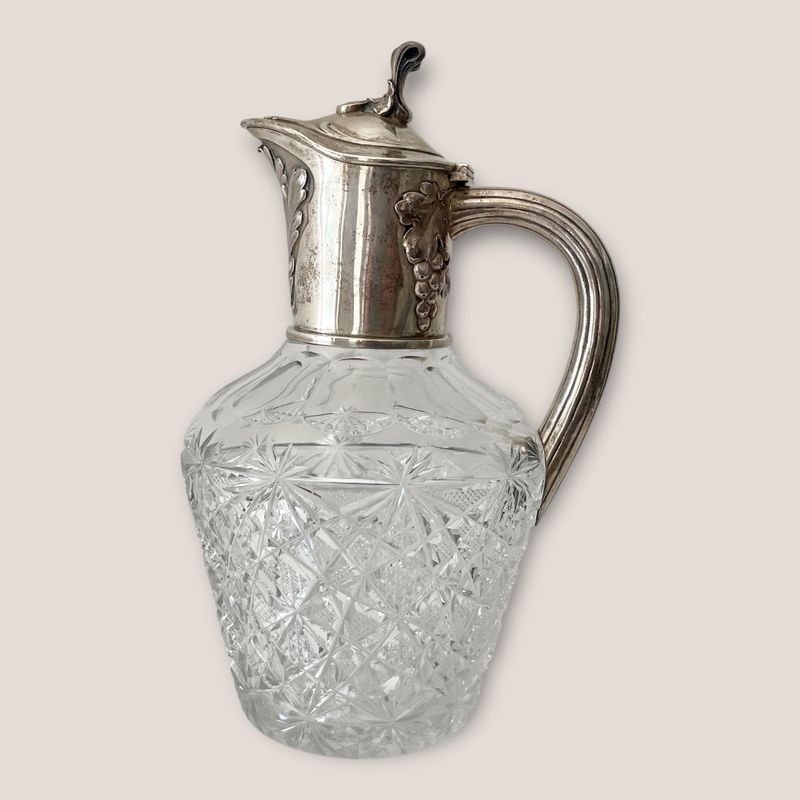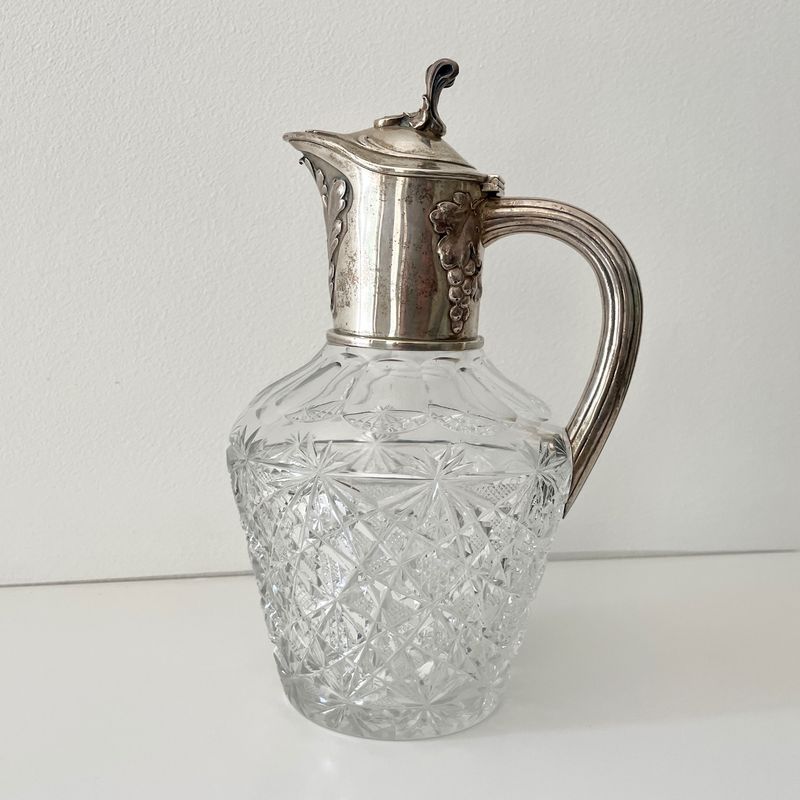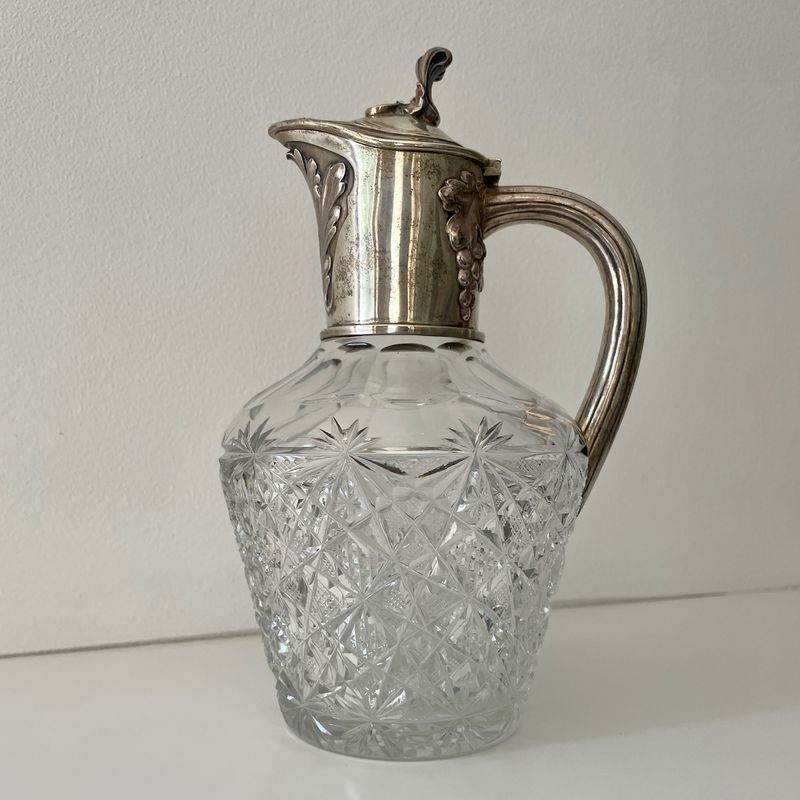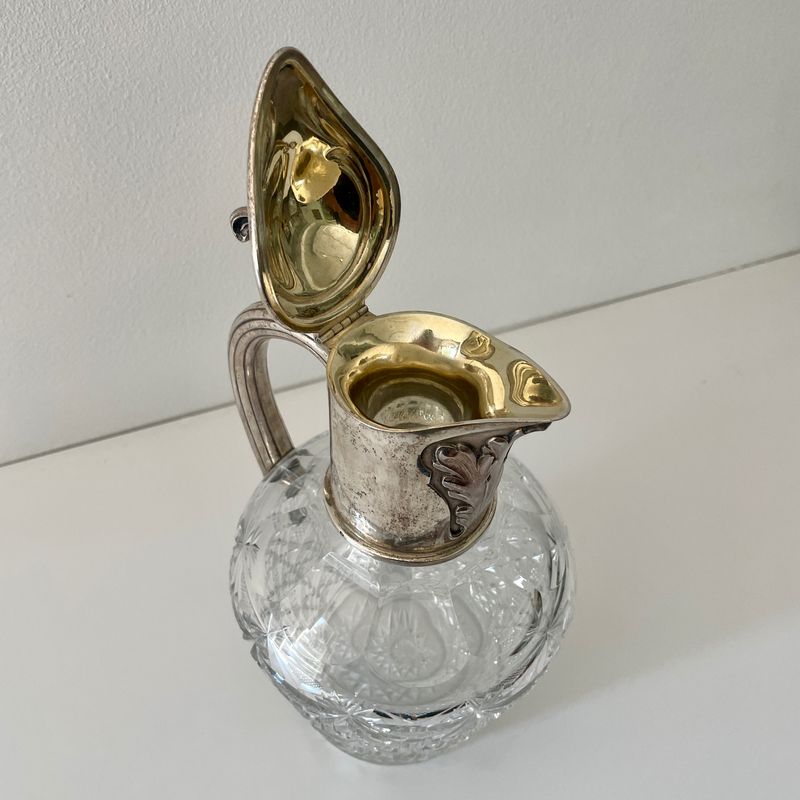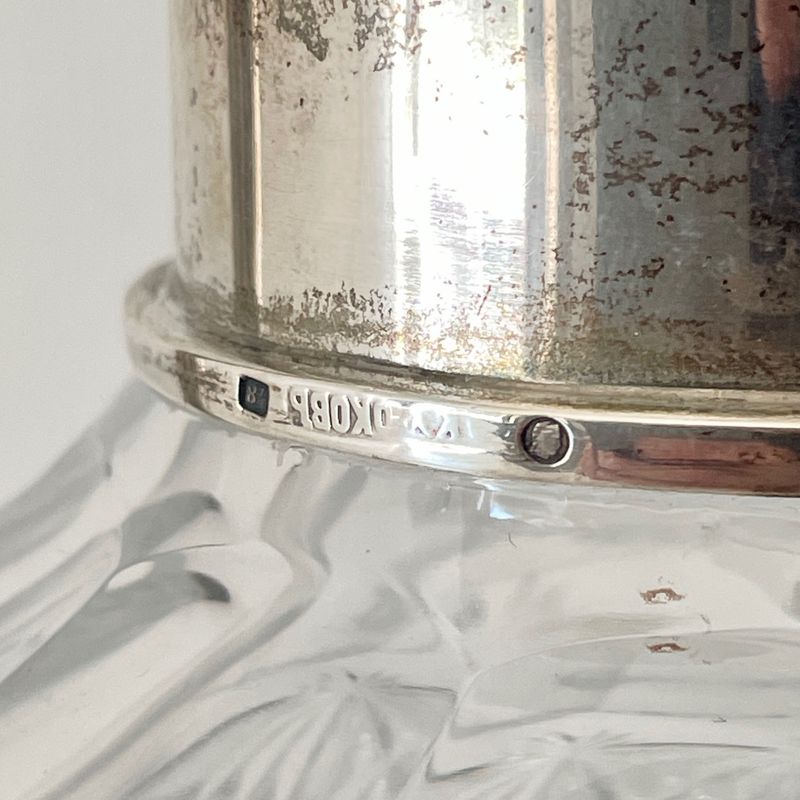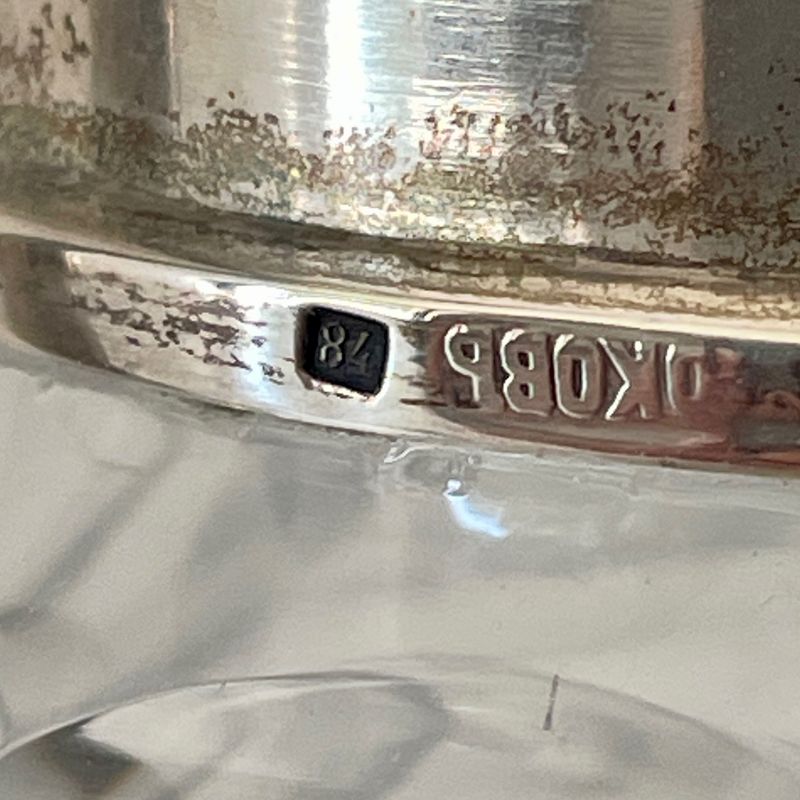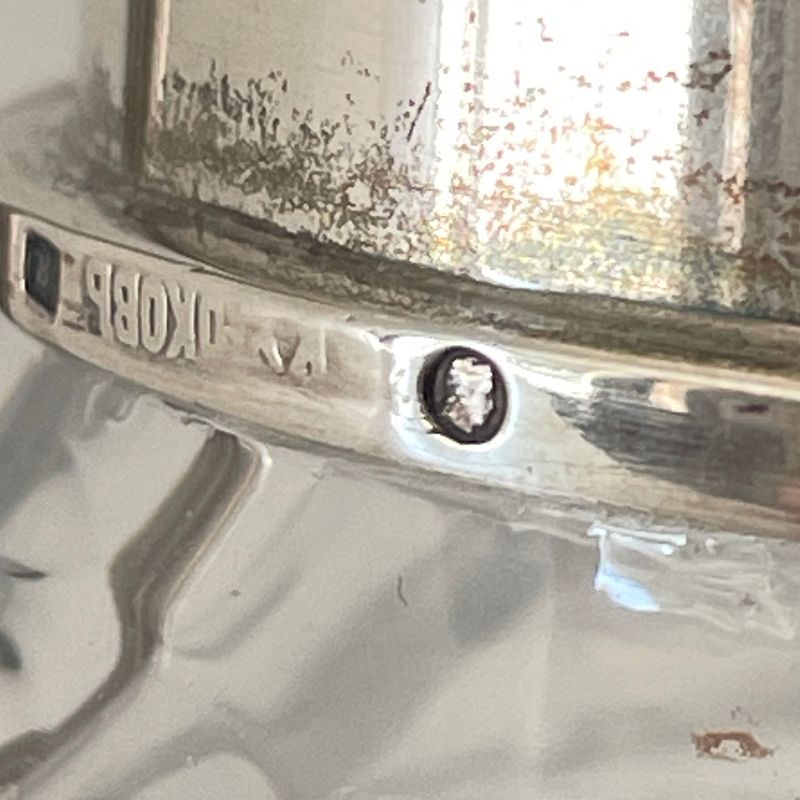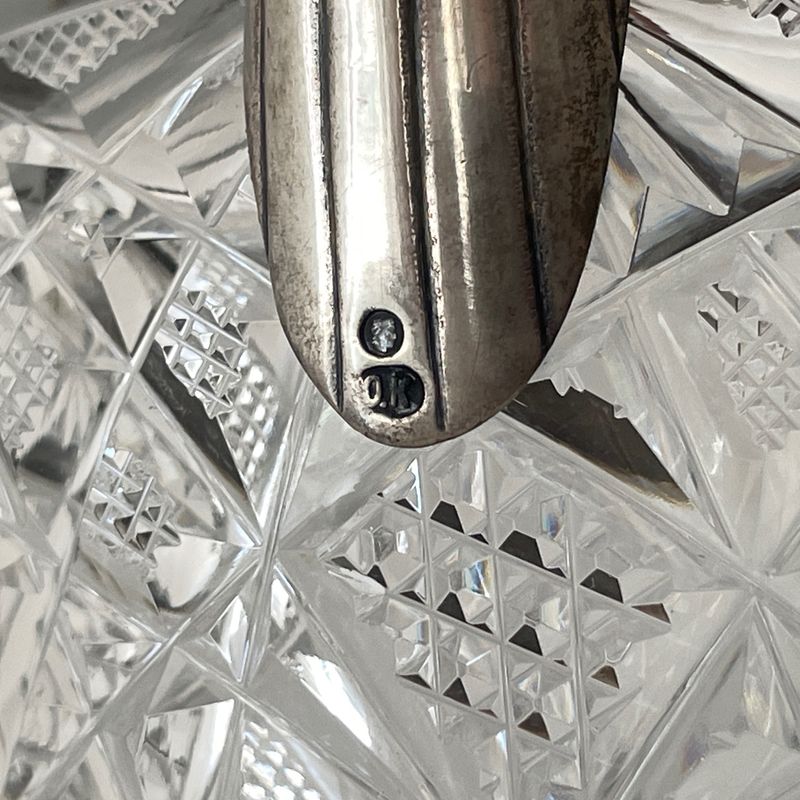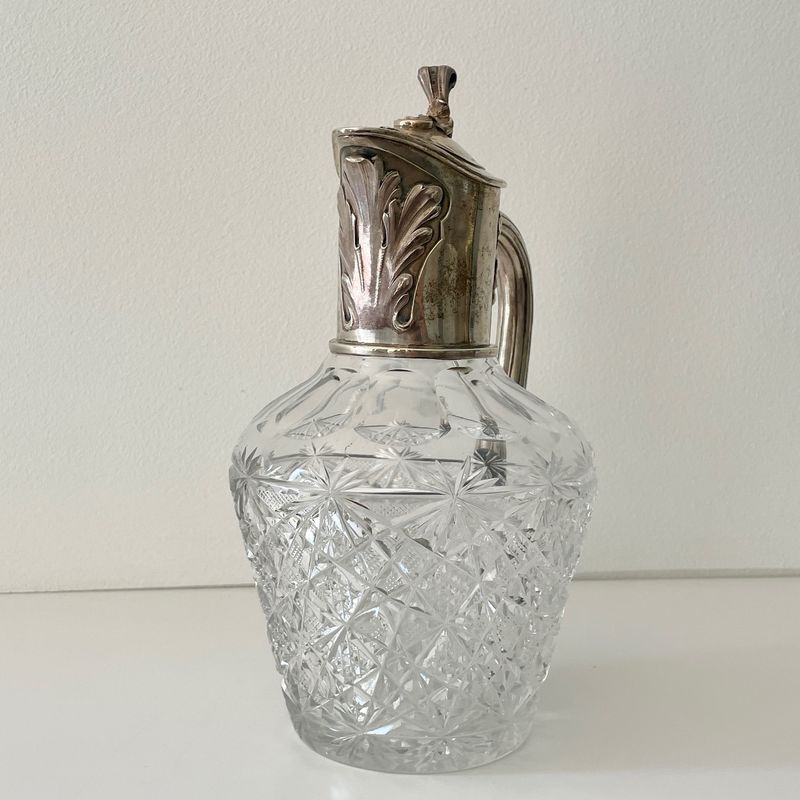Extremely rare Russian Imperial silver and crystal carafe by Orest Kurlyukov.
1908-1917
Extremely rare Russian Imperial silver and crystal carafe by Orest Kurlyukov.
1908-1917
Color
N/A
Condition
Excellent
Material
Silver
Place of production
Moscow
Payment methods (5)
Shipping Methods (3)
Description
Extremely rare Russian Imperial silver and crystal carafe by Orest Kurlyukov, Moscow 1908-1917. The Kurlyukov Firm – A Historical Overview Orest Fedorovich Kurlyukov (1845–1916) was the founder and proprietor of a renowned silverware manufactory established in Moscow in 1884. The factory specialized in creating high-quality artistic silver items adorned with gemstones, crystal, and decorative glassware. The company flourished in the late 19th and early 20th centuries but ceased operations following the Russian Revolution in 1918. The firm's golden age was during the 1890s, marked by its close collaborations with the workshops of K. Ruckert and the prestigious House of Fabergé. Initially based on Vorontsovskaya Street, the factory later moved to Kurlyukov’s private residence on Kolpachny Lane. The company’s official retail store was located on Ilyinka Street in the famous Khludov House. In 1895, Kurlyukov’s products received a medal from the Ministry of Finance in recognition of their “Diligence and Artistry.” The workforce grew from 40 employees in 1901 to 63 by 1914. By 1907, the firm’s annual turnover had reached 100,000 rubles. Orest Kurlyukov, a second-guild merchant, held several influential positions: head of the Moscow merchants’ estate from 1897, inspector of gold and silver item production (1892–1898), and member of the Moscow Commercial Court. The Kurlyukov firm was known for its diverse production of silver goods. It produced items in the distinctive Russian Revival style, richly embellished with enamel and icons, as well as luxurious Art Nouveau pieces—highly fashionable in Moscow at the time. Since the 1830s, decorative arts in Russia had increasingly drawn from historic styles, reviving elements from past eras. This trend was particularly evident in gold and silver craftsmanship, where Rococo motifs and a renewed interest in traditional Russian forms inspired artisans. Techniques such as enameling, niello, and filigree gained popularity during this period, shaping the distinctive aesthetic of the time. Following Orest Kurlyukov’s death in 1916, his son, Nicholas Orestovich Kurlyukov, briefly continued the business. However, the firm was ultimately shut down after the Revolution. 23 cm high Hallmarked O.Kurlyukov, kokoshnik mark for Moscow, 84 Zolotnik imperial standard Inv: 5998D251N307
Description
Extremely rare Russian Imperial silver and crystal carafe by Orest Kurlyukov, Moscow 1908-1917.
The Kurlyukov Firm – A Historical Overview
Orest Fedorovich Kurlyukov (1845–1916) was the founder and proprietor of a renowned silverware manufactory established in Moscow in 1884. The factory specialized in creating high-quality artistic silver items adorned with gemstones, crystal, and decorative glassware. The company flourished in the late 19th and early 20th centuries but ceased operations following the Russian Revolution in 1918.
The firm's golden age was during the 1890s, marked by its close collaborations with the workshops of K. Ruckert and the prestigious House of Fabergé. Initially based on Vorontsovskaya Street, the factory later moved to Kurlyukov’s private residence on Kolpachny Lane. The company’s official retail store was located on Ilyinka Street in the famous Khludov House.
In 1895, Kurlyukov’s products received a medal from the Ministry of Finance in recognition of their “Diligence and Artistry.” The workforce grew from 40 employees in 1901 to 63 by 1914. By 1907, the firm’s annual turnover had reached 100,000 rubles.
Orest Kurlyukov, a second-guild merchant, held several influential positions: head of the Moscow merchants’ estate from 1897, inspector of gold and silver item production (1892–1898), and member of the Moscow Commercial Court.
The Kurlyukov firm was known for its diverse production of silver goods. It produced items in the distinctive Russian Revival style, richly embellished with enamel and icons, as well as luxurious Art Nouveau pieces—highly fashionable in Moscow at the time.
Since the 1830s, decorative arts in Russia had increasingly drawn from historic styles, reviving elements from past eras. This trend was particularly evident in gold and silver craftsmanship, where Rococo motifs and a renewed interest in traditional Russian forms inspired artisans. Techniques such as enameling, niello, and filigree gained popularity during this period, shaping the distinctive aesthetic of the time.
Following Orest Kurlyukov’s death in 1916, his son, Nicholas Orestovich Kurlyukov, briefly continued the business. However, the firm was ultimately shut down after the Revolution.
23 cm high
Hallmarked O.Kurlyukov, kokoshnik mark for Moscow, 84 Zolotnik imperial standard
Inv: 5998D251N307
Cookie notice
This website uses cookies. Please accept them for an optimal browsing experience. More information in our Terms & Conditions.
